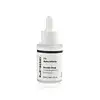What's inside
What's inside
 Key Ingredients
Key Ingredients

 Benefits
Benefits

 Ingredients Side-by-side
Ingredients Side-by-side

Water
Skin ConditioningButylene Glycol
HumectantAcetyl Glucosamine
Skin ConditioningAlpha-Arbutin
AntioxidantXanthan Gum
EmulsifyingHydrolyzed Soy Protein
HumectantXylitylglucoside
HumectantAnhydroxylitol
HumectantXylitol
HumectantBetaine
HumectantBeta-Glucan
Skin ConditioningCaprylyl Glycol
EmollientEthylhexylglycerin
Skin ConditioningGlycerin
HumectantPentylene Glycol
Skin ConditioningSodium Acetylated Hyaluronate
HumectantSodium Hyaluronate
HumectantGlucose
HumectantSodium Hyaluronate Crosspolymer
HumectantHydrolyzed Sodium Hyaluronate
Skin ConditioningChondrus Crispus Extract
Skin ConditioningPhenoxyethanol
PreservativeChlorphenesin
AntimicrobialCitric Acid
BufferingWater, Butylene Glycol, Acetyl Glucosamine, Alpha-Arbutin, Xanthan Gum, Hydrolyzed Soy Protein, Xylitylglucoside, Anhydroxylitol, Xylitol, Betaine, Beta-Glucan, Caprylyl Glycol, Ethylhexylglycerin, Glycerin, Pentylene Glycol, Sodium Acetylated Hyaluronate, Sodium Hyaluronate, Glucose, Sodium Hyaluronate Crosspolymer, Hydrolyzed Sodium Hyaluronate, Chondrus Crispus Extract, Phenoxyethanol, Chlorphenesin, Citric Acid
 Reviews
Reviews

Ingredients Explained
These ingredients are found in both products.
Ingredients higher up in an ingredient list are typically present in a larger amount.
Alpha-Arbutin is made from hydroquinone and glucose. It may also be derived from the fermentation of soybeans.
This ingredient an antioxidant, meaning it helps protect your skin cells against damage.
Studies show this ingredient helps improve hyperpigmentation and fade discoloration.
Alpha-Arbutin may be used with other ingredients that help with hyperpigmentation. These ingredients include retinol, Vitamin C, niacinamide, and tranexamic acid.
Learn more about Alpha-ArbutinChlorphenesin is a synthetic preservative. It helps protect a product against bacteria in order to extend shelf life. In most cases, Chlorphenesin is paired with other preservatives such as phenoxyethanol and caprylyl glycol.
Chlorphenesin is a biocide. This means it is able to help fight the microorganisms on our skin. It is also able to fight odor-releasing bacteria.
Chlorphenesin is soluble in both water and glycerin.
Studies show Chlorphenesin is easily absorbed by our skin. You should speak with a skincare professional if you have concerns about using Chlorphenesin.
Learn more about ChlorphenesinThis ingredient is created by putting sodium hyaluronate through hydrolysis.
You might know this as 'mini' or 'ultra low-molecular weight' hyaluronic acid. The small molecule size means it is able to travel deeper in the skin.
According to studies, low molecular-weight hyaluronic acid can:
One study from 2011 found ultra-low weight HA to show pro-inflammatory properties. Another study from 2022 found it to downregulate UV-B induced inflammation.
Hydrolysis is a process of changing a molecule using water or enzymes.
This ingredient is water-soluble.
Learn more about Hydrolyzed Sodium HyaluronatePhenoxyethanol is a preservative that has germicide, antimicrobial, and aromatic properties. Studies show that phenoxyethanol can prevent microbial growth. By itself, it has a scent that is similar to that of a rose.
It's often used in formulations along with Caprylyl Glycol to preserve the shelf life of products.
Water. It's the most common cosmetic ingredient of all. You'll usually see it at the top of ingredient lists, meaning that it makes up the largest part of the product.
So why is it so popular? Water most often acts as a solvent - this means that it helps dissolve other ingredients into the formulation.
You'll also recognize water as that liquid we all need to stay alive. If you see this, drink a glass of water. Stay hydrated!
Learn more about Water